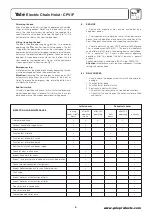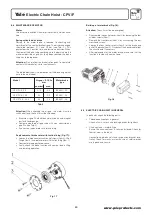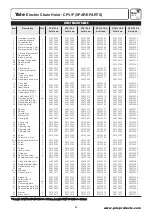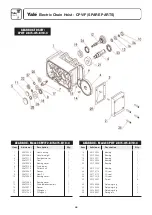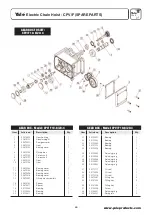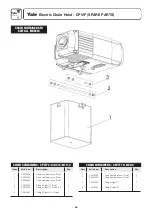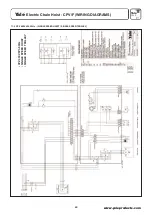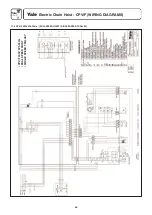
Yale
Electric Chain Hoist - CPV/F
®
9
www.yaleproducts.com
Attaching the load
Attach the load to the hoist using only approved and certified
slings or lashing devices. Never use the load chain as sling
chain. The load must always be seated in the saddle of the
hook. Never attach the load to the tip of the hook (Fig. 10). Do
not remove the safety catch from the load hook.
Lifting / lowering the load
The load is lifted by depressing the -button, it is lowered by
depressing the -button. For hoists with two speeds: The first
stage of button depression activates the slow speed, further
depression activates the faster speed. In order to raise the load,
always use the lowest available lifting speed. The chain must be
loaded at this speed and may not lie slack on the floor. Use the
slow speed for short periods only. Do not use the chain ends
stop as operational limit device (see Fig. 1).
Emergency stop
All movement can be immediately halted by depressing the red,
mushroom shaped button on the pendant control.
Attention:
Operating the red emergency button does NOT
automatically disconnect the mains supply to the hoist or
trolley. To release the emergency stop, rotate the button in an
anti-clockwise direction.
End limit switch
This hoist is provided with an end limit switch for the lowest and
highest hook position as standard. This limit switch is a safety
device and may not be used as operational limiting device.
8.
SERVICE
•
Service and inspections may only be carried out by a
competent person.
• The inspection must determine that all safety devices are
present and fully operational and covers the condition of the
hoist, lifting gear, accessories and supporting constructions.
• The Yale electric chain hoist CPV/F conform to FEM group
1Am, in accordance with FEM 9.511. This results in a theoretical
service lifetime of 800 resp. 400 operating hours under full load.
This is equivalent to 10 years under normal operating
conditions. After this period the hoist requires a general
overhaul.
Further information is contained in BGV D6 rep. FEM 9.755.
Attention:
Maintenance work requires subsequent function
testing with nominal load.
8.1 DAILY CHECKS
1. Visually check the pendant control switch and cable for
damage.
2. Function test of brake.
3. Function test of end limit switch.
4. Electric chain hoists with trolley:
• Check that the trolley runway is free from obstructions.
• Check that the end stops on the trolley runway are fitted
and secure.
t
t
Initial checks
Periodical checks
INSPECTION AND MAINTENANCE
during
after 50
after 200
after 200
commissioning operating
operating
daily
operating
annually
hours
hours
hours
Lubricate load chain.
•
•
•
•
Pendant control and support wire.
•
•
•
Check oil level.
•
•
•
Function test of brake.
•
•
Function test of end limit switch.
•
•
Function test of overload device.
•
•
Electrical installation and power supply.
•
•
Check for wear in chain drive.
•
•
•
Inspect chain bolts for cracks.
•
•
Inspect susp. bracket and load hook for cracks/deformation.
•
•
Check screwed connections for tightness.
•
•
Inspect trolley components for cracks/deformation.
•
•
Oil change.
•
•
Inspect motor and transmission of hoist.
•
Inspect motor and transmission of trolley.
•
Adjustment of overload device.
•
Adjustment of brake.
•
Lubricate geared trolley drive.
•
Yale
CPV/F
®









